Glazed Pottery Art of Peshawar |
|---|
Text & Photos By Sher Alam Shinwari PESHAWAR: During my childhood, I used to collect my coins in a clay pot; we used to call it khazana meaning ´´treasure´´. I broke my khazana on every happy occasion, be it Eid or my birthday to meet my expenses. That small clay pot was a fascinating thing and it brought immense joy for me as it was a rare personal possession. 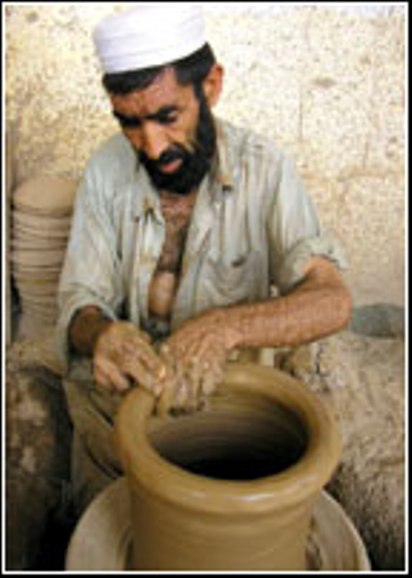 During summer season, clay pot makers bring their donkeys laden with household utensils especially pitchers and bowls to sell out in cities. Drinking cold and fresh water from a pitcher made of clay gives us a sense of real joy during summer. 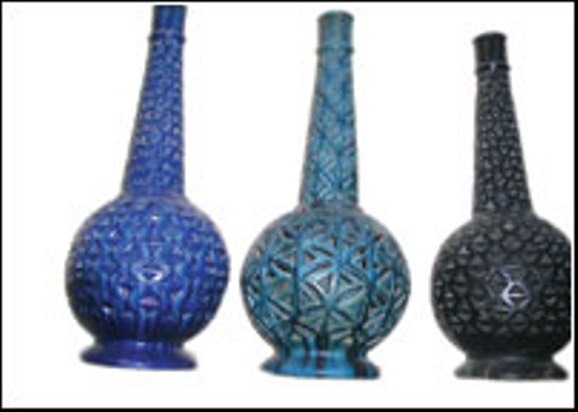 The art of making clay pots seems to be as old as human race itself. Necessity of the past has now become a fashion. People no more purchase clay pottery to fulfil their household needs but keep it in their homes just for the sake of decoration. 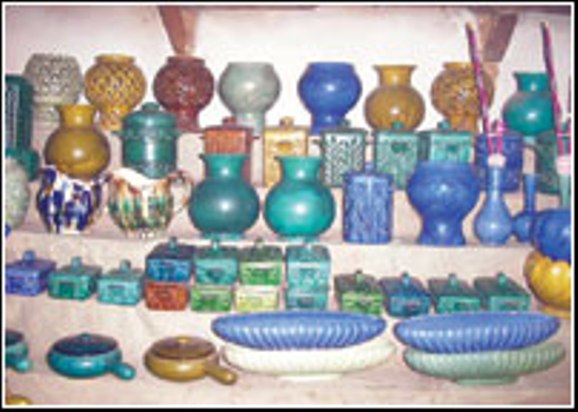 The clay pottery of Peshawar has gained a widespread reputation for its unique artistic beauty. Glazed pottery was once a great art in the subcontinent. But unfortunately clay pottery as an art is on the decline as ceramics, ground crystal, glass and plastic works have captured the markets. Kashmiri were the most accomplished masters of this unique art. ´´In 1860 some Kashmiris had 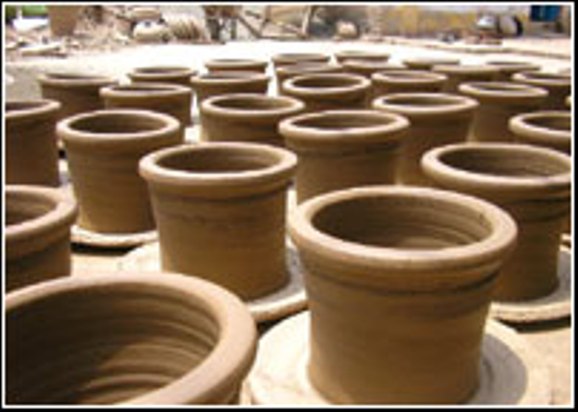 brought the art of glazed pottery to Peshawar and trained a few people here who later on adopted it as a profession under the supervision of my father Muhammad Daud Khan,´´ says Abdur Rauf Seemab, 84, a graduate of the Edwards College, Peshawar. ´´My father started patronising this art in 1900 and established two furnaces where glazed pottery was made. Soon it gained tremendous popularity among the locals as well as foreigners. English and Arab visitors would demand it in great quantity,´´ Seemab explains adding that several artisans from Kashmir, Punjab and Frontier were also engaged to fulfil the demands of the foreign buyers. Various items were made as per buyers´ demands. 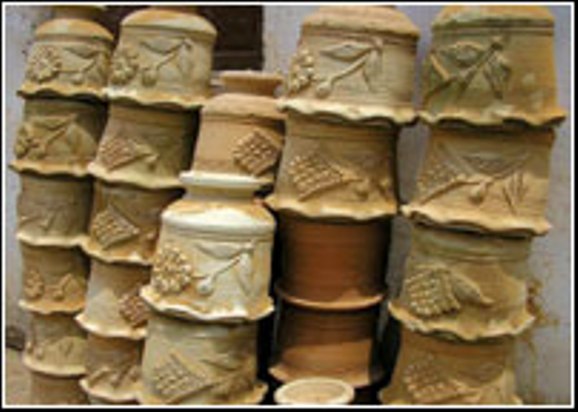 Snaking through the narrowest dark lanes of Shah Wali Qitaal behind the famous Misgaraan Bazaar, one can find the corner where Seemab still runs a small shop in which he has showcased 500 rare and precious pieces of glazed pottery. He says his family had given great boost to the art of glazed pottery by blending its indigenous innovations and kept this art alive for three generations. ´´After the Russian invasion in Afghanistan, the number of foreigners visiting Peshawar declined greatly and the incident of 9/11 further blocked the way for foreigners, which badly influenced pottery art,´´ reveals Seemab. He further adds, ´´I had to switch over to another business, so I razed the furnaces, built two shopping centres instead and relieved some 20 artisans due to lack of any substantial demand. Also locals lost their interest in purchasing 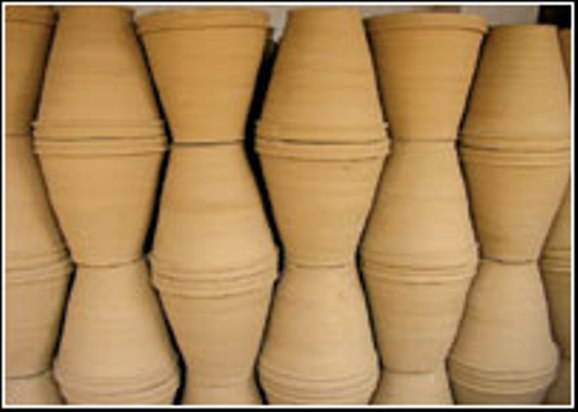 pottery. The art pieces showcased here are available at the rate of Rs50 to Rs500,000. I am not an artisan myself but my father had trained me to supervise every step of making glazed pottery.´´ The clay for making glazed pottery used to be brought from White Clay Mountain in Kalabagh. Among rare pieces there are two urns more than 100 years old. Seemab is waiting for a potential international buyer as they had been made in a very special manner in different stages by utilising precious clay and glazed items. ´´I don´t clearly remember when these urns were made but they may be more than 100 years old and are very special as my father would not sell them out and kept them in corner as symbol of unique art,´´ says Seemab. ´´My first offer is for my own country, if there is a government-sponsored buyer I can sell out to him at a low price on the condition that these pieces are showcased at a national museum. There are two main reasons behind this decision, first they are rare pieces and second, the artwork employed in their making is a symbol of cultural heritage,´´ Seemab states. 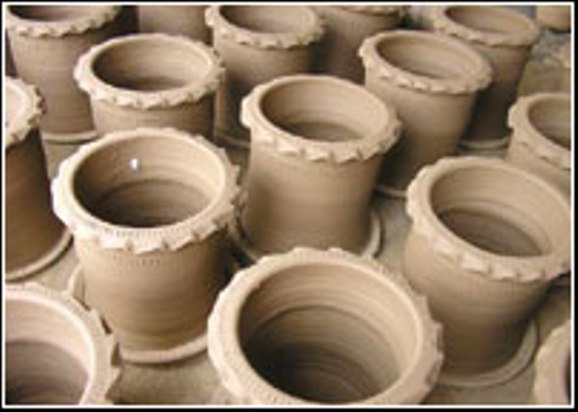 He says if the government makes efforts for reviving this beautiful art of glazed pottery, there are many jobless artisans who could be hired and international buyers would also take interest in this original handicraft. He regrets that even simple pottery art is on the decline. There are only 100 furnaces, called ´´paja´´ in local dialect, around Peshawar where aged potters are making clay pots. ´´This is my ancestral profession but our young ones are not at all interested in this profession which is a beautiful art at the same time. It is not a lucrative job and also it needs hard labour and expertise,´´ says Tawab Gul, 65. Baked pottery is least used in homes nowadays even in remote villages, only clay pitchers and bowls are used during summer while affluent families purchase vases for plants and flowers. According to Ahmed Khan, 67, the places at the outskirts of Peshawar city from where red clay was found have been consumed. ´´We buy a trolley for Rs1,500 to Rs2,000. It takes a week to make a clay pot with simple mosaic work but it´s not sold at a high price. One day we will have to say goodbye to this profession,´´ he says regretfully. Affluent people in lavish hotels still cherish food cooked in clay pots (Haandi) and water being served in clay bowls. Four hundred years ago, Rahman Baba, a legendary Pashto folk poet, preferred clay bowls over golden jug. In a Pashto couplet he said, ´´Badhshahaan Ka Uba Skee Pajaam Da Zaroo/ Ma Rahman Lara Da Khawaro Kandul Kha De´´(kings are served water in golden jugs but I, Rahman, would prefer clay bowl). 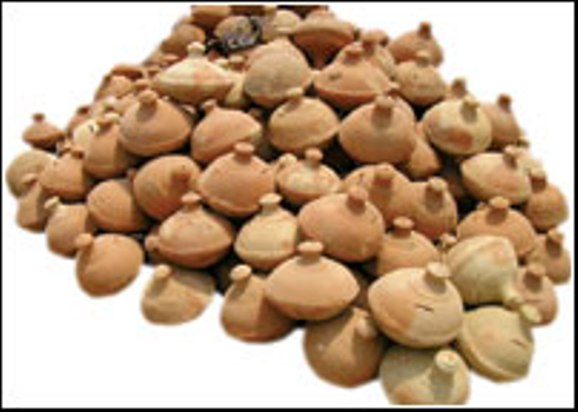 ´´To drink water in a clay bowl is good for health. It contains natural flavour and it maintains healthy elements intact which kill germs that are harmful to human health,´´ says Dr Faheem a general physician at a local hospital. ´´Food cooked in a haandi tastes better. The people should use clay pots because they not only prevent various stomach diseases but also enliven beautiful old traditions,´´ advises the doctor. Shera Alam Shinwari د پښتنو قامي سنګر |
| - Sher Alam Shinwari - |
Sunday, June 6, 2010
Glazed Pottery Art of Peshawar
Subscribe to:
Post Comments (Atom)


0 comments:
Post a Comment